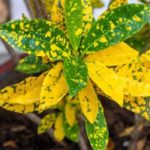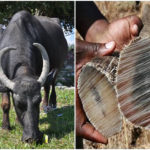The Terminalia catappa tree, commonly known as the Indian almond tree, is more than just a beautiful addition to landscapes and a purifier of the air we breathe. Its medicinal properties, used in both Eastern and Western medicine, are equally remarkable.
1 What is the Indian Almond Tree?
Origin and Significance of the Indian Almond Tree
The Indian almond tree, with the scientific name Terminalia catappa, belongs to the Combretaceae family, and thrives in tropical regions, originating from the Malay Peninsula, India, and New Guinea.
This tree significantly enhances the aesthetics of streets, schools, and parks with its broad canopy. Additionally, the Indian almond tree is a valuable medicinal plant used to treat a wide range of ailments.
 Origin and Significance of the Indian Almond Tree
Origin and Significance of the Indian Almond Tree
Characteristics of the Indian Almond Tree
Also known as Quang lang, Bang bien, Badamier, or Choambok Barangparrcang Prang, the Indian almond tree is a large, straight-growing tree with a height reaching up to 25 meters and a wide-spreading canopy. Its branches grow horizontally, and it has a distinctive spoon-shaped leaf with a rounded tip and prominent veins, measuring 20-30 cm in length.
 Scientific Name: Terminalia catappa
Scientific Name: Terminalia catappa
The Indian almond tree produces long, pendulous inflorescences up to 15-20 cm in length, bearing fruits that are 4 cm long and contain a yellow-red aril with fibrous flesh. The fruiting season typically occurs from August to October, and the seeds within the fruit are rich in oil and can be processed in various ways.
2 Medicinal Uses of the Indian Almond Tree
The Indian almond tree is renowned for its air-purifying and landscape beautification qualities, thanks to its broad canopy. However, its medicinal properties are equally noteworthy, gaining recognition in both Eastern and Western medicine.
 Air Purification and Landscape Beautification
Air Purification and Landscape Beautification
The leaves, fruits, seeds, and bark of the Indian almond tree are all utilized medicinally. Modern medical research has identified the presence of gallotannins and their derivatives, such as catechic and pyrogalic tannins, in the leaves and bark.
Tannins are powerful antioxidants with anti-inflammatory and antibacterial properties, making them effective in treating joint pain and various other ailments. The bark, when boiled, is used to treat digestive issues, reduce pain and fever, and disinfect wounds.
Additionally, the seeds contain oil that can be processed into a roasted delicacy or extracted for industrial use.
Medicinal Remedies Using the Indian Almond Tree
Remedy for Rheumatism and Joint Pain
- Pick young, tender leaves and either stir-fry them or pound them into a paste to apply to the affected areas.
Treatment for Sore Throat and Toothache
 Treating Sore Throat and Toothache
Treating Sore Throat and Toothache
- Sore Throat Remedy: Pound 7-10 young leaves with ¼ teaspoon of salt and a small amount of water, then strain the mixture and use the decoction as a mouthwash, rinsing every 4 hours.
- Toothache Remedy: Boil a handful of young leaves or bark in water to make a concentrated solution, and use it as a mouthwash or gargle daily. Alternatively, soak the bark in alcohol and gargle with the solution 3 times a day.
Treatment for Pimples, Boils, and Skin Infections
 Treating Pimples, Boils, and Skin Infections
Treating Pimples, Boils, and Skin Infections
- Pimple Treatment: Pound a handful of leaves, boil them in water, and apply the cooled solution to the affected areas for 15-20 minutes, then rinse with warm water.
- Treatment for Boils, Ulcers, and Scabies: Dry young leaves in the sun, grind them into a fine powder, and sprinkle the powder on the affected areas for healing.
Treatment for Gynecological Issues
- Boil 10-15 leaves in 1 liter of water with 3 teaspoons of sea salt for 30 minutes, then strain the solution and use it to wash the affected area 3-5 times a day.
Treatment for Stomach Ache, Diarrhea, and Ulcers
- Stomach Ache Remedy: Boil 2 liters of water with a handful of young leaves, strain the solution, and drink the leaf water throughout the day.
- Diarrhea and Ulcer Treatment: Boil 12-15 g of young leaves in 200 ml of water and drink the decoction as needed, adding a little honey to improve the taste if desired.
Hemorrhoid Treatment
 Treating Hemorrhoids
Treating Hemorrhoids
- Wash the leaves, chop them finely, and boil them to make a solution for soaking the affected area for 15-20 minutes.
- Cleanly wash Hemerocallis fulva (also known as orange day lily or tiger day lily), add a small amount of saline solution, and pound into a paste. Apply this paste to the affected area overnight, repeating this process once a day for a month.
Treatment for Eczema in Children
 Treating Eczema in Children
Treating Eczema in Children
- Give your child a bath with water boiled with Indian almond leaves for a few days, or wash young leaves, soak them in salted water, pound them with a few grains of salt, and apply the paste to the affected areas.
Treatment for Excessive Sweating and Fever
Note: While the Indian almond tree is used to treat various ailments, it is important to consult a doctor before using any of these remedies to ensure proper guidance and safety.
3 How to Grow and Care for the Indian Almond Tree
Growing the Indian Almond Tree at Home
Planting Season
The Indian almond tree can be planted year-round, but the best times are at the beginning of spring or the start of the rainy season to ensure optimal growth and development.
Light
The Indian almond tree thrives in full sunlight, so choose a planting location that receives ample sunlight and is open and spacious.
Temperature
This tree is highly tolerant of both hot and cold temperatures, making it adaptable to various climates.
Soil
The Indian almond tree can grow in a variety of soils, from fertile loamy soil to dry, nutrient-poor soil. However, it performs best in slightly acidic loamy soil (pH 5.5-6) that is rich in organic matter, well-drained, and airy.
Planting Hole
Prepare a planting hole measuring 50x50x50 cm, and if you’re planting on a hill or slope, dig the hole 10 cm deeper to accommodate the tree’s root system.
Planting Material
The Indian almond tree is typically propagated through seed germination. However, to save time and effort, you can purchase young tree saplings from local plant nurseries.
 Growing the Indian Almond Tree at Home
Growing the Indian Almond Tree at Home
Caring for the Indian Almond Tree
Watering
The Indian almond tree does not require frequent watering but cannot withstand prolonged droughts. Water the tree once a week to maintain its health.
Pruning
As the tree matures, prune the top shoots to encourage the growth of new branches and a fuller canopy. During the rainy season, trim the branches to reduce the risk of damage from strong winds and storms.
 Caring for the Indian Almond Tree
Caring for the Indian Almond Tree
Notes on Planting and Caring for the Indian Almond Tree
- If planting during the summer, do so in the early morning or late afternoon to avoid the hottest part of the day. After planting, provide shade and adequate water for the tree.
- Prepare the planting hole and mix the fertilizer with the soil about 20 days before planting. The fertilizer should consist of a blend of composted manure, rock phosphate, and lime.
4 5 Beautiful Images of the Indian Almond Tree
 Indian Almond Tree in the Outskirts of Hanoi
Indian Almond Tree in the Outskirts of Hanoi
 Solitary Indian Almond Tree
Solitary Indian Almond Tree




































